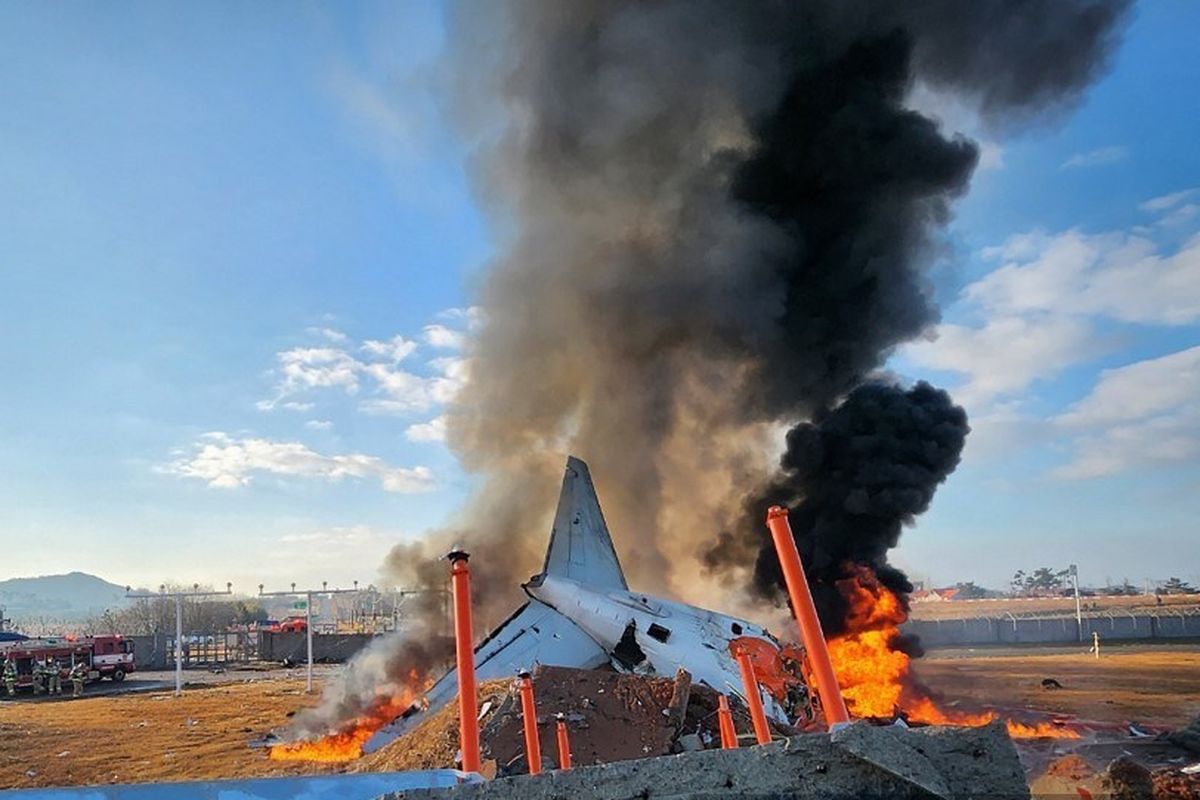The fatal crash of Jeju Air flight 7C2216 on December 29 at Muan International Airport in South Korea’s Jeolla Province has left the nation reeling and aviation experts probing a series of unsettling questions. The disaster, which resulted in the deaths of 176 individuals, has been preliminarily linked to a suspected failure in the aircraft’s hydraulic system. Alvin Lie, an aviation analyst, has provided crucial insights into the potential mechanical flaws that may have contributed to the tragedy.
The Boeing 737-800 was on a routine flight from Bangkok to Muan when the incident unfolded. According to reports from South Korea’s Ministry of Land, Infrastructure, and Transport, air traffic controllers issued a bird strike warning at 8:57 a.m., alerting the crew to the potential danger posed by a flock of birds in the vicinity. At 8:58 a.m., the pilot declared a mayday, indicating a severe emergency. Within minutes, the aircraft attempted to land but veered off the runway, colliding with the airport’s perimeter fence and erupting into flames.
Alvin Lie has pointed to a possible malfunction in the aircraft’s hydraulic system as a key factor in the crash. Video footage from the scene revealed that the landing gear did not deploy, and the wing flaps were not in the correct position for a safe landing. These technical anomalies would have forced the aircraft to approach the runway at a dangerously high speed, making it nearly impossible for the crew to execute a controlled landing. “The evidence suggests that a hydraulic system failure prevented the deployment of critical components like the landing gear and flaps, creating a situation where the aircraft was essentially uncontrollable upon touchdown,” Lie explained during an interview.
While the bird strike warning has been highlighted in early reports, Lie has expressed skepticism about its role in the disaster. Modern jet engines, including those on the Boeing 737-800, are designed to withstand bird strikes without catastrophic consequences. Even if a bird strike had occurred, the aircraft should have been able to maintain control and land safely. “Bird strikes are serious, but they rarely lead to complete loss of control. This crash points to a deeper mechanical failure,” Lie noted.
Witness accounts and video evidence depict a harrowing sequence of events. The aircraft descended with visible sparks and smoke emanating from its undercarriage. Upon hitting the runway, it failed to decelerate, skidding uncontrollably before smashing through the perimeter fence. The impact ruptured the fuel tanks, triggering an explosion that engulfed the plane in flames. Emergency response teams struggled to contain the fire and reach survivors, with many passengers succumbing to the blaze before they could be rescued.
Investigators are now focusing on the aircraft’s black box, which houses the flight data recorder (FDR) and cockpit voice recorder (CVR). These devices are expected to provide vital information about the mechanical state of the aircraft and the actions of the crew in the moments leading up to the crash. “The black box data is crucial for understanding the chain of events that led to this disaster. It will shed light on whether the hydraulic failure was the result of a design flaw, inadequate maintenance, or another issue altogether,” Lie emphasized.
In the aftermath of the tragedy, authorities at Muan International Airport have come under scrutiny for their handling of the bird strike warning and their emergency preparedness. Jeju Air has grounded its fleet of similar aircraft as a precaution and pledged full cooperation with the investigation. The crash has sparked renewed calls for rigorous safety audits and the implementation of advanced monitoring systems to prevent similar incidents in the future.






